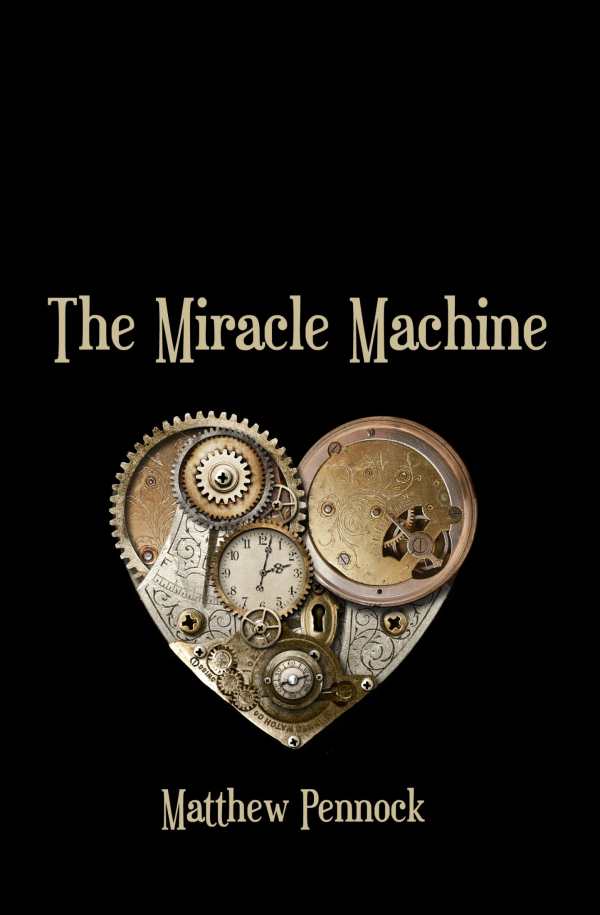The Miracle Machine
Poems
Like a constellation in which perception and purpose are stars, The Miracle Machine is a fantastic poetic work.
Marrying poetry with fantasy, Matthew Pennock’s The Miracle Machine is a phenomenal trip that loops through time, following love and searching for meaning.
Pennock juices the true tale of an automaton, L’automate, that was built by the Swiss engineer Henri Maillardet, sold to P. T. Barnum’s museum, and resurrected over a century later at The Franklin Institute, for his book. It squeezes out imagined thoughts and feelings from its voiceless cast. Its narrator is a youthful, enamored, confused robot philosopher who journals his escape from the exhibition, after which he moves alone up the East Coast, searching for his One-Eyed Girl.
Enhancing the robot’s memories are many carnival compatriots from his earlier life, including the two halves of the famous Feejee Mermaid (a hoax whereby Japanese fisherman affixed the front of a monkey to the tail of a fish to create a “mermaid” skeleton). The Monkey half discusses human greed with humor, their short speeches full of energy. The Fish Half speaks in longer, blocked stanzas, talking about war and gods and finding reason in ruin. Elsewhere, Ned the Learned Seal performs with care, and the Dog Who Ran the Loom weaves themes into the greater picture. Their input reflects deeper questions about L’automate’s motive, such as “why play when there’s nothing to win but loss?”
Multilingual phrases, odes to Greek gods, and abstruse diction, as with “apeish malefactor,” enrich the book’s carnivalistic setting. Images of crooked buildings, smoldering manhole covers, and rococo cornices bring to life eras past, while smells of popcorn and sugar tug at the heartstrings.
The book’s meter is conversational and rhythmic, but the poems follow no rules but their own. Their free form structure is elegant, with structural plays: in “Crossing the Delaware,” the lines are set as if the poem itself was struggling to get to the opposite embankment. These methods enhance the book’s thematic notion that time is an illusion, not an entrapment.
Repetition, alliteration, and assonance help to spin the tales along their axes. The supporting similes are translucent, helping to make many motifs more clear. Importance is give to the moon, eyes, gods, entrapment, purpose, and love: this multifaceted focus is sometimes distracting, but the book’s steadfast philosophies and foreshadowing of fates carries its stories on.
Four eras are traversed through, via the imagined voices of those caught in Barnum’s web, to reveal a tale of human introspection in the poetic fantasy The Miracle Machine.
Reviewed by
Samantha Ann Ehle
Disclosure: This article is not an endorsement, but a review. The publisher of this book provided free copies of the book and paid a small fee to have their book reviewed by a professional reviewer. Foreword Reviews and Clarion Reviews make no guarantee that the publisher will receive a positive review. Foreword Magazine, Inc. is disclosing this in accordance with the Federal Trade Commission’s 16 CFR, Part 255.

